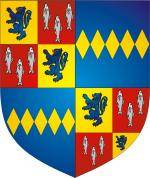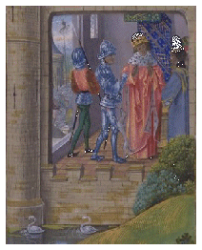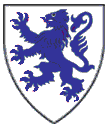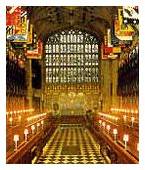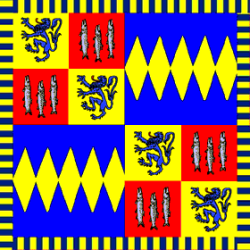

 Henry 4th Lord Percy - 1st Earl of Northumberland
Henry 4th Lord Percy - 1st Earl of Northumberland 


Death Notes
Died in battle.
General Notes
Fourth Lord Percy of Alnwick (1368 - 1409).
First Earl of Northumberland.
Fought with King Edward III against the French in 1359, 1363, 1368 (Calais). In 1377 commanded the English garrisons in France.
1377-1378 lead a large army against the Scots - repeated battles.
1399 he and his son Hotspur deposed King Richard II of England and put Henry Bolingbroke on the throne as Henry IV (see Shakespeare's Henry IV).
1403 - the Rising of the Percys - Henry and his son Hotspur rose against Henry IV at the Battle of Shrewsbury where Hotspur was killed. Henry surrended but was pardoned.
1404 Henry again rebellled, this time with the Archbishop of York, but yielded to King Henry's cannons.
Henry then took refuge in Scotland and conspired with Owen Glendower.
1409 was Henry's last uprising against Henry IV - Henry Percy was defeated and killed at Branham Moor.
Northumbria (Northumberland in English) was originally the Anglian kingdom between the Humber and the Tweed. Its western boundary varied substantially, and at one time it included part of the Lothians in Scotland, but we may consider it today as it is shown here on the map, with the southern portion (less densely purple) having been lost to the Danish invasion and settlement in the 9th century, but reintegrated with the northern portion by Siward the Dane.
The design of a flag for this territory should be heraldically lawful, easily distinguished from others, aesthetically pleasing, and relevant to the history of Northeastern England.
About 925 A.D. the king ruling the northern portion of Northumbria from Bamborough Castle accepted the overlordship of the Saxon kings then unifying what would become the Kingdom of England. Since then, apart from those few years when some of the territory was ruled from Scotland, Northumbria has been part of England. A new flag should recognise this, and could use the most obvious emblem ~ the red cross of St George.
What then might be included to distinguish the new flag from that of England? Suggestions of a whippet and a pigeon are, of course, facetious, and no suitable modern symbol that might represent the whole area springs readily to mind. Does history offer something?
The early rulers of Northumberland, such as Siward (who died at York in 1055 A.D.) and his successors, held sway over the whole area marked on the map, but there is no surviving heraldry associated with their names. From 1095 A.D. to 1377 A.D., apart from five years when the Bishop of Durham held it in return for funding Richard I's crusade, it was held by the royal houses of either England or Scotland, but in 1377 the Earldom of Northumberland was granted to Henry de Percy, whose ducal descendants still hold it today.
The Percy arms might thus have been considered as a possibility for inclusion, but there is another candidate of probably greater merit. Agnes de Percy, an early coheiress, married about 1155 A.D. Jocelin de Louvain, and their descendants kept the Percy name but, before 1377 when the earldom was granted, gave precedence to the Louvain arms over their own pronominal arms. This precedence has over the centuries caused the blue Louvain lion to be associated directly with the earldom (later the dukedom), while the Percy arms remain linked to the surname. (The Bruce family in Yorkshire, kinsmen of King Robert the Bruce, married into the Percy family, also bore a blue lion, but on a silver field instead of gold.)
-
Individual Additional Information
-
Associated external link media/ind00075.htm
 Details of Henry's family with Margaret de Neville
Details of Henry's family with Margaret de Neville
Page last modified
This page is within a frameset. View the entire genealogy report of 4th Lord Percy - 1st Earl of Northumberland families, or surname index of 4th Lord Percy - 1st Earl of Northumberland pedigrees or report summary 4th Lord Percy - 1st Earl of Northumberland heritage from 'Moore, Simpson, Ballard Family Tree - England and Scotland to Australia'.
Description of Genogram Symbols.
Copyright © 2011 GenoPro Inc. All rights reserved.
